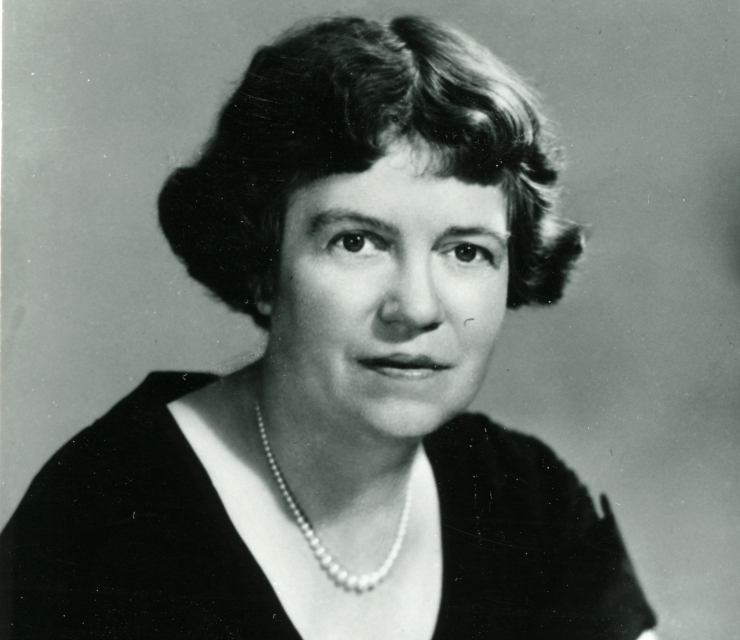
Eunice Thomas Miner played a significant role in growing the Academy’s membership in the 20th century.

When Eunice Thomas Miner became involved with the New York Academy of Sciences in 1932, the Academy was in a state of great flux. Its records showed just $6,000 in assets and double that amount in unpaid bills. And its Membership numbers were dire.
“We had the grand total of exactly one active Member,” Miner later recalled in an interview, noting that while 317 people were listed on the books, only one was recorded as having paid dues.
But the worst part, in Miner’s view, was the general apathy about the Academy’s proceedings. She recalled a geology paper presentation attracting a total of four participants: “the section head, my husband, myself, and a janitor.” Miner, at the time a young research assistant in the American Museum of Natural History’s Zoology Department — the Academy’s offices were housed within the museum in those days — felt something had to be done to turn things around.
Bringing the Academy “Back to Life”
She decided to “bring the Academy back to life.” Her goal was more idealistic than merely increasing participation and reviving publications. Miner wanted to create a place for scientific debate, where researchers could share their work, present recent discoveries and argue new ideas.
“I felt the Academy, if it could be rejuvenated, would provide a true forum, a unique institution that scientists could call their own,” she later said.
Miner took the Academy’s future not only into her own hands, but also into her own apartment. To draw more participants, she and her husband, Roy Waldo Miner, hosted paper presentations at their own dinners. That earned the Academy 72 Members within a year.
A Goal of 100 New Members Each Year
Miner promised to hit 100 new people annually, with a total goal of 1,000 Members. That required significant time and energy, so she left her research position at the museum and fully devoted herself to the Academy’s needs.
Miner’s Membership drives, which she began running in 1936, exceeded all expectations. She recruited 110 new Members the first year, more than doubled that amount the next year, and by 1940 reached her 1,000 Member goal — much sooner than planned.
Given her successes, the Scientific Council of the Academy appointed her as the organization’s Executive Secretary. By the time Miner retired from her role as Executive Director of the Academy in 1967, after serving in a number of positions, the Academy counted over 26,000 Members across the world. Among her many impactful achievements was securing the organization a new home, through a gift from wealthy philanthropist Norman Woolworth, who donated his mansion to the Academy.
The Role of the Academy
However, Miner’s vision for the Academy and the sciences it represented was far more than a permanent home and stable financing. She saw the organization playing a key role in fostering scientific collaborations and educating the public about scientific progress.
“The time has long since passed when the scientist could afford to isolate himself in his laboratory or think of his discipline as a world unto itself,” Miner said in one of her later interviews. “Today, more than any other time in history, disciplines interact with each other and are dependent upon each other, both in a research and social sense.”
Moreover, Miner wanted scientists to build public awareness of what was developing in their respective fields; to involve them in the inspiring process of discovery.
“More than ever, the public needs to be informed about science,” she said, emphasizing the critical role of research in modern society.
Miner envisioned the Academy as an enabler and disseminator of the scientific progress, and, a half-century later, the Academy still upholds this vital tradition.
Also see:



